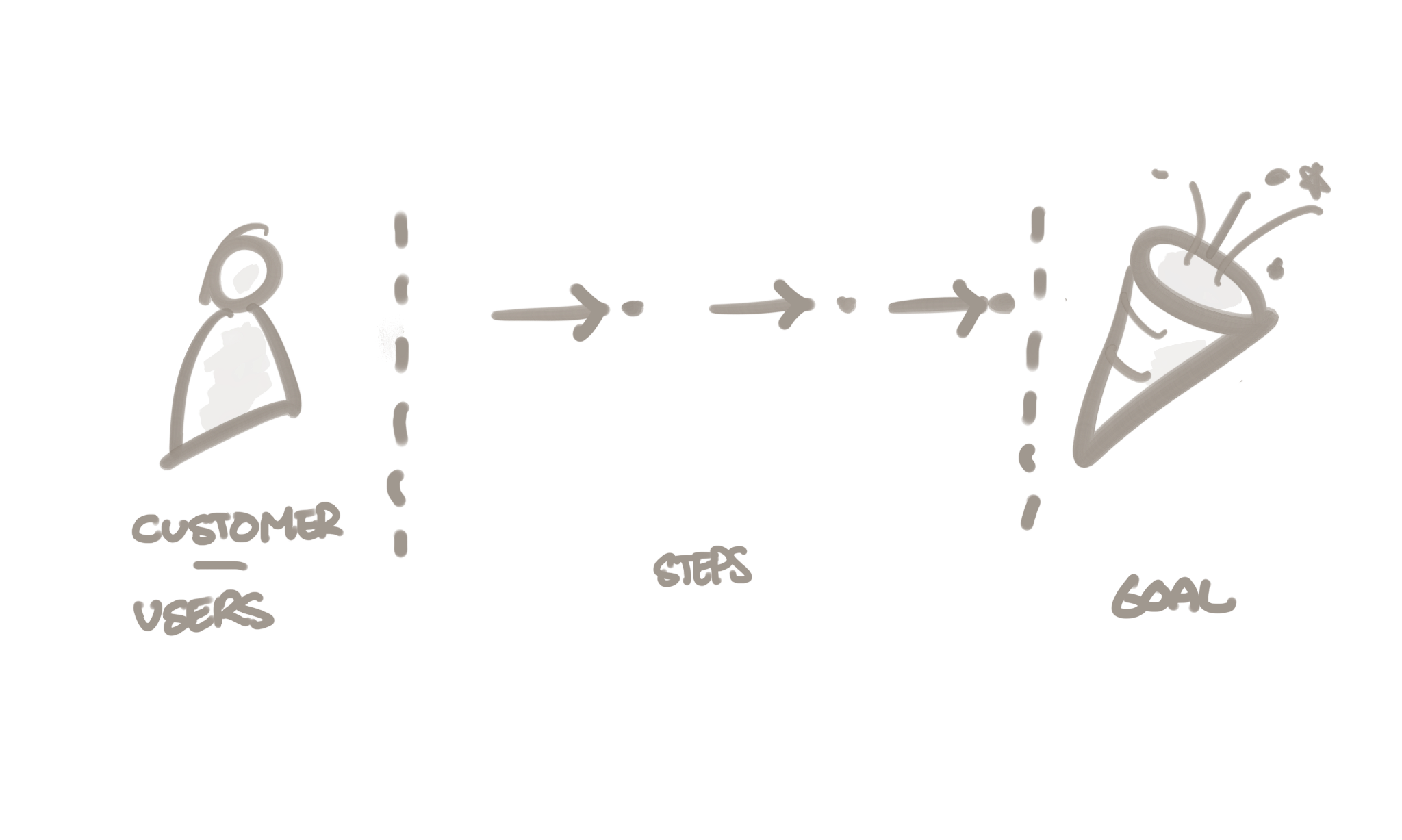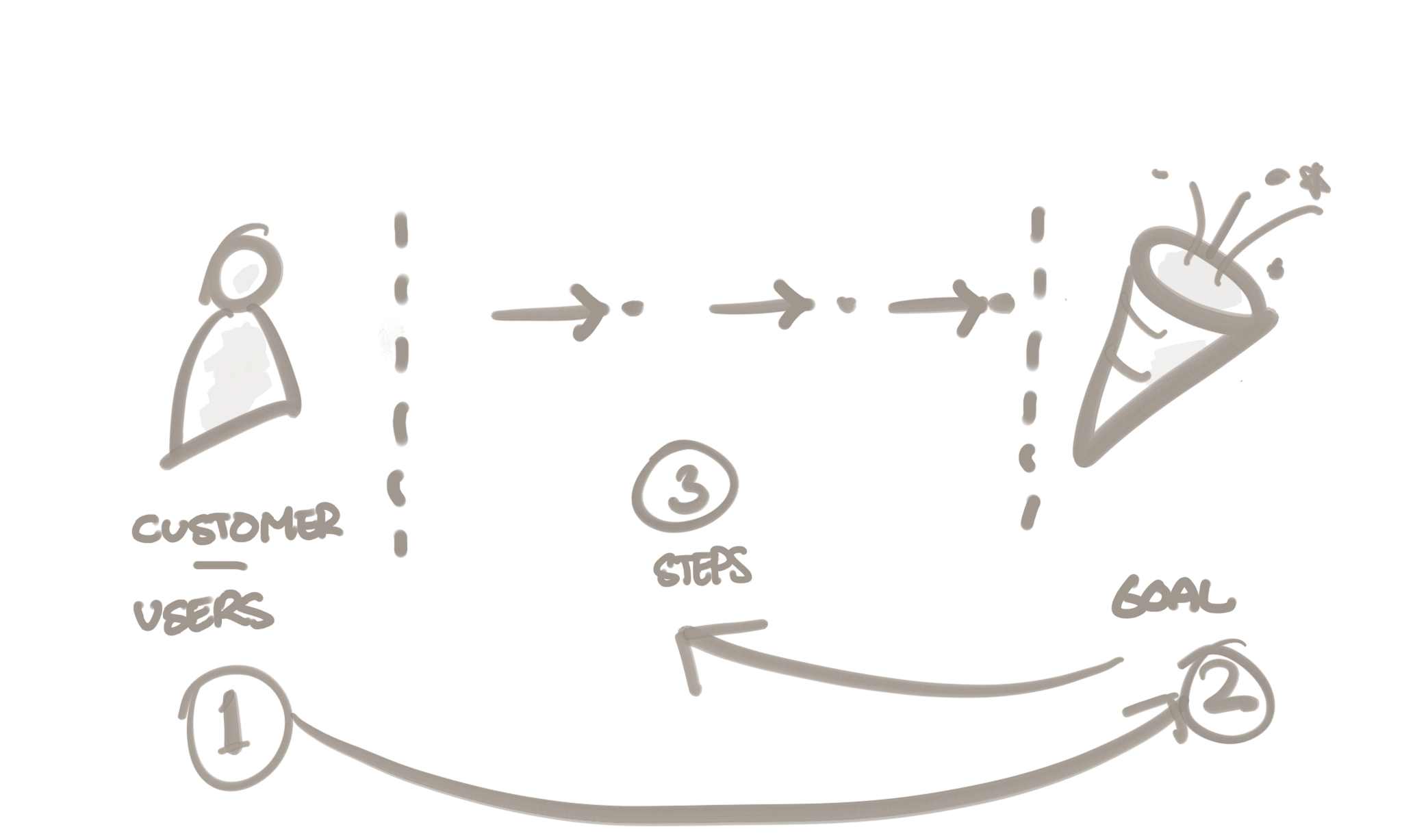How you can walk out of your next workshop with actionable outcomes
Innovation Playbook Series - The MAP is an activity that will enable you to create tangible outcomes and fuel your strategies, define focus for projects or concepts and set clear next steps. By the end of this post, you will be equipped with a way to turn workshops into actionable stepping stones towards your goals. Let’s get started and read to the end to see a real world example of a map I created at NAB to tackle Fraud and Scams.
Here is where my strategy and service design capabilities have really played out to my advantage as an Innovation Facilitator.
When creating a product strategy/roadmap or a service blueprint to understand what we are solving for and aligning with how we will do it, we start by visualising the interaction. This allows the team to focus on where the most impact and value will be realised, allowing them to prioritise their effort and focus on which customer outcomes will be “game changers”.
I implement this in most of my strategy, product, Design Sprint and troubleshooting workshops. We might be getting through months of work in days, but this guidance allows the team to take a holistic view of the experience and work together to focus on where the opportunities are and, most of all, make it tangible. In my experience, it leads to breakthrough collaborative thinking and problem-solving that can be actioned.
One of the biggest detracting experiences for workshop participants is leaving with questions as to how they can apply the outcomes of workshops in the actual activities when they return to their desks.
So, what is the map? Like Customer Journey Mapping, the Mapping exercise aims to understand the journey(s) that exist between our customers/users, commencing with how they enter and then creating a high-level set of steps towards their goals.
This will result in one or possibly more drawn journey maps to help you and your participants understand and align on the interactions that support customers in achieving their goals. It becomes the centre stage for validation, prioritisation and focus.
Top Tips:
1. As the facilitator, be the guide, not the hero, and let the team align on the map; this will pay off much more than pulling a Jamie Oliver with 'Here’s one I prepared earlier.'
2. Keep these simple; complexity is a killer here! So, set a clear understanding of the task upfront. We are seeking alignment, not a three-layer deep process map capturing every touchpoint and decision element. Most interactions have these key elements: Search, Explore, Select, Apply, Order, Access, Compare, Decide, Commit, Use, Cancel, or Close.
3. Start with the customer/users and then move to their goals.
4. Then, attempt to map it out in under 8 steps as to how they reach their goal. Remember Point 2.
5. If you use a whiteboard, put it up high and create plenty of space between each step, making it easier for later alignment, ideation, and prioritisation of activities.
6. Depending on how you want to facilitate this, you might be in a situation where the team has produced multiple views of this map, I suggest consolidating them into one. You will thank me later!
7. Through your activities, treat it as the backbone of your workshop and as a living artefact; come back to the map to validate, assess new factors, challenge thinking, and most of all, walk out of the workshop with actionable results.
I hope this proves as effective for you as it has for me in achieving outcomes from your workshops. As always, please reach out if you have questions, need support, or could use my facilitation services in this way.
A Map created for Fraud and Scams at NAB



